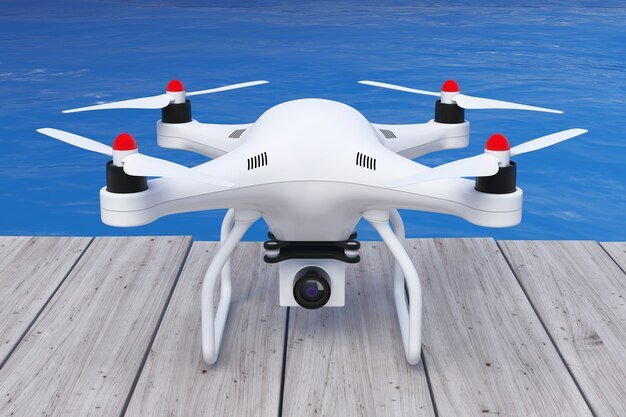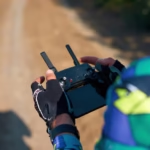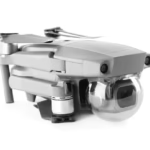Top 10 Drone Cameras with Google integration offer a unique blend of advanced aerial photography capabilities and smart technology. These drones, equipped with cutting-edge cameras, allow users to capture stunning footage from the sky while benefiting from the power of Google’s AI and mapping systems. Whether you’re a hobbyist or a professional photographer, these drones enhance your creative possibilities, providing seamless navigation, live streaming, and high-quality image stabilization. Here, we explore the top contenders that combine innovation with Google’s smart features for an exceptional flying experience.
Top 10 Drone Camera with Google
1.Drone Camera with Google: DJI FPV Combo
The DJI FPV Combo is a groundbreaking drone that combines the thrill of FPV flying with DJI’s renowned camera technology. It features a 4K/60fps camera, super-wide 150° field of view, and low-latency transmission for an immersive flight experience.
Specifications:
- Camera: 4K/60fps video recording
- Field of View: 150°
- Transmission Range: Up to 6.2 miles
- Max Speed: 87 mph
- Flight Time: Approximately 20 minutes
- Weight: 795 grams
Pros:
- Immersive FPV experience with high-quality visuals
- High-speed capabilities suitable for dynamic shooting
- Advanced safety features, including obstacle sensing
- User-friendly S Mode for simplified FPV flying
- Robust build quality
- Comprehensive accessory support
- Reliable transmission range
- Customizable settings for various skill levels
- Compatibility with DJI FPV Goggles V2
Cons:
- Steeper learning curve for beginners
- Limited repairability compared to traditional FPV drones
- Higher price point
- Shorter flight time due to high performance
- Requires registration due to weight
- Limited compatibility with non-DJI accessories
- Potential signal interference in urban areas
- Noisy operation at high speeds
- Limited internal storage
How to Use:
- Setup: Charge the drone, controller, and goggles.
- Pairing: Connect the drone to the controller and goggles following the manufacturer’s instructions.
- Calibration: Calibrate the compass and IMU as prompted.
- Flight Modes: Start in Normal Mode to get accustomed to the controls before progressing to S Mode or Manual Mode.
- Safety Checks: Ensure the flying area is clear of obstacles and check local regulations.
- Takeoff: Use the auto takeoff feature or manually take off by gently pushing the throttle.
- Flying: Use the controller to navigate, and the goggles will provide a live FPV feed.
- Landing: Use the auto-landing feature or manually land by reducing the throttle.
Where to Purchase:
2. Drone Camera with Google: DJI Avata 2
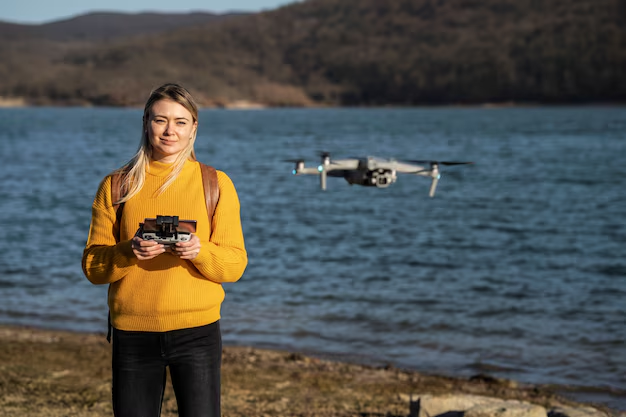
The DJI Avata 2 is an agile FPV drone designed for immersive flight experiences. It features a 4K camera with a super-wide 155° field of view and advanced stabilization technologies, making it suitable for both beginners and experienced pilots.
Specifications:
- Camera: 4K/60fps video recording
- Field of View: 155°
- Transmission Range: Up to 13 km
- Max Speed: 60 mph
- Flight Time: Approximately 23 minutes
- Weight: 377 grams
Pros:
- Robust protective frame design
- Produces steady, high-quality video
- Comfortable and clear Goggles 3
- Easy to control, suitable for first-time pilots
- Better battery life compared to typical FPV drones
- Advanced stabilization features
- High-quality 4K video capture
- Intuitive controls suitable for beginners
- Durable build for indoor and outdoor use
Cons:
- No forward collision sensors
- Requires additional controller for full manual mode
- Higher price point
- Limited payload capacity
- No interchangeable lenses
- Requires additional accessories for optimal use
- Limited range in urban environments
- No built-in display on the controller
- Limited third-party accessory support
How to Use:
- Setup: Charge all components, including the drone, controller, and goggles.
- Pairing: Connect the drone to the controller and goggles following the manufacturer’s instructions.
- Calibration: Calibrate the compass and IMU as prompted.
- Flight Modes: Start in Normal Mode to get accustomed to the controls before progressing to Sport or Manual Mode.
- Safety Checks: Ensure the flying area is clear of obstacles and check local regulations.
- Takeoff: Use the auto takeoff feature or manually take off by gently pushing the throttle.
- Flying: Use the controller to navigate, and the goggles will provide a live FPV feed.
- Landing: Use the auto-landing feature or manually land by reducing the throttle.
Where to Purchase:
3. Drone Camera with Google: DJI Neo
The DJI Neo is an ultra-lightweight drone designed for both indoor and outdoor use. Weighing just 135 grams, it offers a 4K/30fps camera and intelligent flight modes, making it an excellent choice for beginners and casual users seeking an immersive FPV experience.
Specifications:
- Camera: 4K/30fps video recording
- Field of View: 130°
- Transmission Range: Up to 10 km
- Max Speed: 33.5 mph
- Flight Time: Approximately 18 minutes
- Weight: 135 grams
Pros:
- Ultra-lightweight and portable design
- Ideal for indoor flights
- User-friendly controls suitable for beginners
- Affordable price point
- Intelligent flight modes for creative shooting
- Voice control capabilities
- Quick setup and easy operation
- Decent video quality for casual use
- Compatible with DJI Goggles N3
Cons:
- Limited flight time compared to larger models
- No obstacle avoidance sensors
- Limited wind resistance due to lightweight design
- Basic camera features
- Shorter transmission range
- Limited to 4K/30fps video recording
- No support for external accessories
- Limited manual control options
- Not suitable for professional-grade footage
How to Use:
- Setup: Charge the drone and controller.
- Pairing: Connect the drone to the controller and DJI Goggles N3.
- Calibration: Calibrate the compass as prompted.
- Flight Modes: Start in standard mode to get accustomed to the controls.
- Safety Checks: Ensure the flying area is clear of obstacles and check local regulations.
- Takeoff: Use the auto takeoff feature or manually take off by gently pushing the throttle.
- Flying: Use the controller to navigate, and the goggles will provide a live FPV feed.
- Landing: Use the auto-landing feature or manually land by reducing the throttle.
Where to Purchase:
4. Drone Camera with Google: DJI Flip
The DJI Flip is a foldable and lightweight drone, weighing less than 249 grams and constructed with carbon fiber. It offers advanced photography and video modes, including 48 MP photos and 4K/60fps video, along with a 4x zoom and slow-motion recording at 4K/100fps. The Flip includes intelligent capture functions and features like automatic braking and voice control.
Specifications:
- Camera: 48 MP photos, 4K/60fps video recording
- Zoom: 4x
- Slow Motion: 4K/100fps
- Weight: Less than 249 grams
- Material: Carbon fiber
- Features: Automatic braking, voice control
Pros:
- Foldable and lightweight design for portability
- High-resolution 48 MP photos
- High-quality 4K/60fps video recording
- 4x zoom capability
- Slow-motion recording at 4K/100fps
- Intelligent capture functions
- Automatic braking for safety
- Voice control feature
- Durable carbon fiber construction
Cons:
- Limited flight time due to lightweight design
- No obstacle avoidance sensors
- Limited wind resistance
- Basic camera features compared to higher-end models
- Shorter transmission range
- Limited manual control options
- Not suitable for professional-grade footage
- Requires additional accessories for optimal use
- Limited compatibility with non-DJI accessories
How to Use:
- Setup: Charge the drone and controller.
- Pairing: Connect the drone to the controller and compatible goggles.
- Calibration: Calibrate the compass as prompted.
- Flight Modes: Start in standard mode to get accustomed to the controls.
- Safety Checks: Ensure the flying area is clear of obstacles and check local regulations.
- Takeoff: Use the auto takeoff feature or manually take off by gently pushing the throttle.
- Flying: Use the controller to navigate, and the goggles will provide a live FPV feed.
- Landing: Use the auto-landing feature or manually land by reducing the throttle.
Where to Purchase:
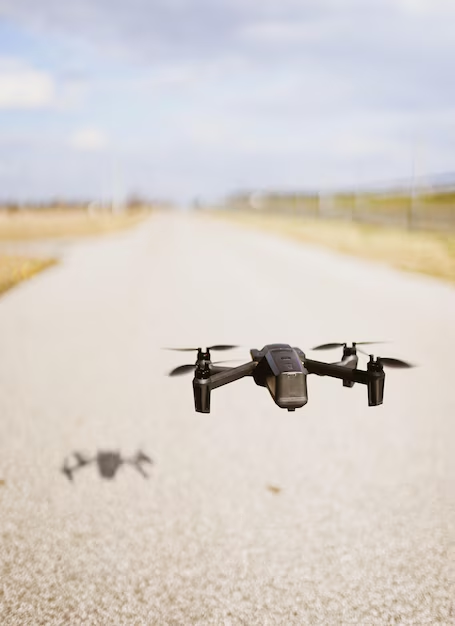
5. Drone Camera with Google: DJI Avata
The DJI Avata is an immersive FPV drone with a durable design, 4K camera, and excellent stabilization. It’s great for both beginners and experienced pilots.
Specifications:
- Camera: 4K/60fps with super-wide 155° FOV
- Transmission Range: Up to 13 km
- Max Speed: 60 mph
- Flight Time: 18-23 minutes
- Weight: 410g
Pros:
- Robust build with propeller guards
- Excellent image stabilization
- Easy to control for beginners
- Great for indoor and outdoor use
- Low-latency video transmission
- Wide FOV for immersive experience
- Long flight time for an FPV drone
- Compatible with DJI Goggles 2
- High-speed performance
Cons:
- No forward collision sensors
- Requires additional controller for full manual mode
- Not ideal for cinematic shots
- Higher price point
- Learning curve for beginners
- Limited payload capacity
- Not compatible with all third-party accessories
- No interchangeable lenses
- Requires practice for smooth maneuvers
Where to Buy:
6. Drone Camera with Google: DJI FPV
A hybrid between an FPV racing drone and a cinematic drone, the DJI FPV offers a first-person view experience with a high-speed flight mode and a 4K camera.
Specifications:
- Camera: 4K/60fps with Rock Steady stabilization
- Transmission Range: Up to 10 km
- Max Speed: 87 mph
- Flight Time: 20 minutes
- Weight: 795g
Pros:
- Fast and agile
- Low-latency goggles experience
- 4K video quality with stabilization
- Emergency brake feature
- Great transmission range
- Three flight modes for all skill levels
- Strong signal even in urban areas
- Compatible with DJI Motion Controller
- Easy-to-use interface
Cons:
- Shorter battery life compared to standard drones
- Higher learning curve for manual mode
- Bulky design
- No collision sensors on the sides
- Limited ability to carry additional gear
- Not waterproof
- Expensive accessories
- Requires registration due to weight
- Harder to repair compared to racing drones
Where to Buy:
7. Drone Camera with Google: BetaFPV Cetus Pro FPV Kit
A beginner-friendly FPV drone kit that includes a drone, goggles, and a controller, perfect for learning FPV flying.
Specifications:
- Camera: 720p FPV feed
- Transmission Range: 200m
- Max Speed: 30 mph
- Flight Time: 5-6 minutes
- Weight: 55g
Pros:
- Affordable beginner FPV kit
- Comes with goggles and controller
- Durable frame for crashes
- Multiple flight modes
- Easy to repair
- Small and lightweight
- No FAA registration required
- Good for indoor flights
- Stable altitude hold
Cons:
- Short battery life
- Not for professional footage
- Limited camera quality
- Lower transmission range
- No obstacle avoidance
- Limited power for advanced maneuvers
- Small screen in goggles
- Cannot be used in windy conditions
- No GPS
Where to Buy:
8. Drone Camera with Google: EMAX Tinyhawk 3 RTF Kit
A beginner FPV drone that includes goggles and a controller, designed for learning and fun indoor flights.
Specifications:
- Camera: 600TVL FPV feed
- Transmission Range: 300m
- Max Speed: 40 mph
- Flight Time: 5 minutes
- Weight: 31g
Pros:
- Beginner-friendly
- Durable frame
- Indoor and outdoor capable
- Affordable full kit
- Great for learning acro mode
- Includes everything to start flying
- Compatible with other FPV systems
- Lightweight for safety
- Easy to repair
Cons:
- Short battery life
- Limited camera resolution
- Not suitable for windy conditions
- Short transmission range
- No GPS
- Basic goggles included
- Requires practice for smooth flying
- No obstacle sensors
- Small battery size
Where to Buy:
9. Drone Camera with Google: GEPRC Cinelog35 HD
A powerful cinematic FPV drone built for professional videographers who want smooth, stabilized footage while still enjoying FPV capabilities.
Specifications:
- Camera: 4K/60fps with HD digital transmission
- Transmission Range: 6 km
- Max Speed: 50 mph
- Flight Time: 12-15 minutes
- Weight: 215g
Pros:
- High-quality 4K footage
- Smooth and stable flying
- Lightweight design
- Durable construction
- Compatible with GoPro cameras
- Good flight time for its size
- HD digital transmission
- Silent propellers
- Great for cinematic shots
Cons:
- Requires FPV experience
- Expensive compared to beginner drones
- No built-in GPS
- Batteries sold separately
- Can be tricky to tune for optimal performance
- Not beginner-friendly
- Lower wind resistance
- Repairs can be costly
- Limited range compared to larger drones
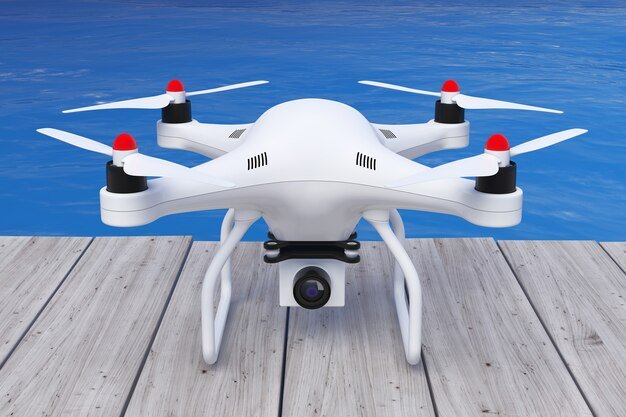
10. Drone Camera with Google: iFlight Nazgul5 V2
The iFlight Nazgul5 V2 is a 5-inch FPV (First-Person View) freestyle drone renowned for its performance and build quality. Designed for both beginners and seasoned pilots, it offers a robust flying experience right out of the box.
Key Specifications:
- Frame: 5mm carbon fiber arms for enhanced durability.
- Motors: XING-E 2207 motors (available in 6S 1800KV or 4S 2750KV configurations).
- Flight Controller: Succe X-E F7.
- ESC: Succe X-E 45A 2-6S BLHeli_S 4-in-1 ESC.
- Camera: RaceCam R1 FPV Camera.
- Video Transmitter (VTX): SucceX Force 5.8GHz 800mW adjustable VTX.
- Propellers: Nazgul 5-inch 3-blade propellers.
- Weight: Approximately 399 grams (without battery).
Pros:
- Durable 5mm arm design enhances crash resilience.
- Pre-tuned and ready to fly, minimizing setup time.
- High-quality XING-E motors provide powerful thrust.
- Adjustable VTX power up to 800mW for extended range.
- LED illuminated logo adds aesthetic appeal.
- Easy-swap arms facilitate quick repairs.
- Compatible with both 5-inch and 5.1-inch propellers.
- TPU crash guards offer additional protection.
- True-X configuration ensures balanced flight characteristics.
Cons:
- Lacks a built-in buzzer; relies on DShot Beacon for lost model alerts.
- No included mount for action cameras like GoPro.
- BLHeli_S ESCs may limit advanced tuning options compared to BLHeli_32.
- Stock battery pad may not provide optimal grip; battery can slide during aggressive maneuvers.
- No strain relief on the XT60 battery connector, posing potential durability concerns.
- Propeller color and strap color may vary, which might not appeal to all users.
- Requires additional accessories like a receiver and compatible transmitter for operation.
- Not equipped with GPS, limiting advanced navigation features.
- Propeller noise can be loud during flight.
How to Use:
- Unboxing: Carefully unbox the drone and inspect for any shipping damages.
- Receiver Installation: Install a compatible receiver (e.g., FrSky XM+, TBS Crossfire) if not pre-installed.
- Binding: Bind the receiver to your transmitter following the manufacturer’s instructions.
- Battery Selection: Choose a suitable LiPo battery (4S or 6S) based on the motor configuration.
- Pre-Flight Check: Verify all components are secure, and perform a systems check.
- Flight Modes: Familiarize yourself with the flight modes configured in Betaflight.
- Maiden Flight: Conduct the first flight in an open area to test performance and make necessary adjustments.
Where to Purchase:
- GetFPV: iFlight Nazgul5 V2 Analog 5″ FPV Freestyle Drone – BNF
- iFlight Official Store: Nazgul Evoque F5 V2 6S HD – iFlight
- Unmanned Tech Shop: iFlight Nazgul5 V2 FPV Quadcopter (PNP)
- Quadcopters UK: iFlight Nazgul5 V2 Freestyle FPV Drone 6S or 4S BNF
- DefianceRC: iFlight Nazgul5 V2 6S FPV Drone – LED Version
- Half Chrome Drones: iFlight Nazgul5 V2- The Best 5″ Quad You Can Buy!

